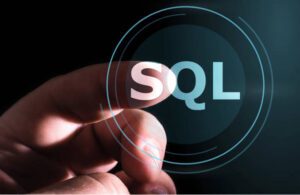随着人工智能的广泛应用,机器学习科目也越来越多人学习,许多辅导机构也开始了ML的相关服务,导致代写机构的质量参差不齐。请选择Topmask具有多年代写经验的老牌代写平台作为首选,不仅有十分丰富的代写经验,而且也在留学生圈子中积攒了大量好评与新老朋友,更多内容和服务信息,可以浏览网站,也可以随时与在线客服:maxxuezhang 联系咨询!
- Topmask 机器学习代写客服与助教全天候在线,随时为提答疑解惑和提供咨询与服务;
- 机器学习代写保证按时完成,预留足够的给您熟悉内容与反馈问题。如果遇到需要修改的情况,我们也会全力配合;
- 支持与学霸大佬直接沟通需求,保证代写的质量和准确度;
可分期付款,支持花呗、支付宝、微信、信用卡等多种支付方式。
Machine Learning代写常见问题解答
1. 机器学习代写机构如何制定收费的标准?
我们会为留学生解决数值计算、数据可视化、图像处理等机器学习代写服务,由于机器学习代写一般对字数无固定要求, 因此,也没有固定的价格。其收费标准一般根据学生的要求、写作时长、作业难度和专家的专业性来确定。一般的项目在¥1000~¥6000之间。
2. 微信上能否评估机器学习代写作业?报价回复需要等多久?
您只需要添加微信客服并提交作业需求,报价所需的时间取决于下单时间和作业要求。通常写手的报价时长控制到半小时以内。但一些特殊情况需要学生和专家在线沟通清楚才能报价。
3. Machine Learning代写流程包括哪几个阶段?
专业的机器学习代写机构会有自己成熟的运营系统, 它所提供的服务流程都很规范。主要有以下几个服务流程:
- 同学们添加客服微信:maxxuezhang下订单, 并上传作业要求及相关资料,我们会根据学生上传的作业要求为留学生匹配最合适的专家。
- 专家在查看完留学生的机器学习代写要求后,一般会在1小时以内给出最优惠的价格,客服在收到专家报价后会及时通知留学生。
(3)留学生收到报价后进行付款,付款方式有两种: 一种是一次性全额支付, 另一种是先付50%的定金, 在专家完成代写服务,对代写作品满意之后支付剩余款项。
(4)专家写作期间, 如果同学们对作业有任何不清楚的地方, 都可以与助教直接沟通。
4. 如何确定机器学习代写写手的专业水平?
EssayOne代写团队多年来吸纳高学历、有经验的专业团队进行代写服务。他们可以完成各种类型的机器学习作业代写。专家专业知识储备丰富、写作水平优秀,同学们可以在支付之前向专家提问或者发测试题以便评估专家水平。
5. 写手可以用特定软件完成machine learning代写吗?
如果需要用到特定的的软件,在提交需求时与客服说清楚,专家接单后直接向专家商讨软件运用的相关细节。
Machine Learning高分代写案例:CSCI 567 USC
Q1. K-means++ initialization
K-means++ generally performs much better than the vanilla K-means algorithm. The only difference is in the initialization of the centroids. According to the discussions in the lecture, implement this initialization in function get_k_means_plus_plus_center_indices. (Note that we also provide the vanilla initialization method in get_lloyd_k_means.)
Q2. K-means algorithm
Recall that for a dataset x_1, . . . , x_N ∈ R^Dx1,…,xN∈RD, the K-means distortion objective is:

In this part, you need to implement the K-means procedure that iteratively computes the new cluster centroids and assigns data points to the new clusters. The procedure stops whenever 1) the number of updates has reached the given maximum number, or 2) when the *average* K-means distortion objective J changes less than a given threshold between two iterations.
Implement this part in the fitfunction of the class KMeans. While assigning a sample to a cluster, if there is a tie (i.e. the sample is equidistant from two or more centroids), you should choose the one with the smaller index (which is what numpy.argmin does already).
After you complete the implementation, run KmeansTest.py to see the results of this on a toy dataset. You should be able to see three images generated in a folder called plots. In particular, you can see toy_dataset_predicted_labels.png and toy_dataset_real_labels.png, and compare the clusters identified by the algorithm against the real clusters. Your implementation should be able to recover the correct clusters sufficiently well. Representative images are shown below. Red dots are cluster centroids. Note that color coding of recovered clusters may not match that of correct clusters. This is due to mis-match in ordering the retrieved clusters and the correct clusters (which is fine).
Q3 Classification with K-means
Another application of clustering is to obtain a faster version of the nearest neighbor algorithm. Recall that nearest neighbor evaluates the distance of a test sample from every training point to predict its label, which can be very slow. Instead, we can compress the entire training dataset to just K centroids, where each centroid is now labeled as the majority class of the corresponding cluster. After this compression the prediction time of nearest neighbor is reduced from O(N) to just O(K) (see below for the pseudocode).
You need to complete the fit and predict function in KMeansClassifier following the comments in the code. Again, whenever you need to break a tie, pick the one with the smallest index.
Once completed, run KmeansTest.py again to evaluate the classifier on a test set (digits). For comparison, the script will also print accuracy of a logistic classifier and a vanilla nearest neighbor classifier. An example is shown below.
Q4 Image compression with K-means
In this part, we will take lossy image compression as another application of clustering. The idea is simply to treat each pixel of an image as a point, then perform K-means algorithm to cluster these points, and finally replace each pixel with its closest centroid.
What you need to implement is to compress an image with K centroids given (called code_vectors). Specifically, complete the function transform_image following the comments in the code.
After your implementation, run KmeansTest.py again. You should be able to see an image compressed_baboon.png in the plots folder. You can see that this image is slightly distorted as compared to the original baboon.tiff. The ideal result should take about 35-40 iterations and the Mean Square Error (between the two images) should be less than 0.0098. It takes about 1-2 minutes to complete normally.







